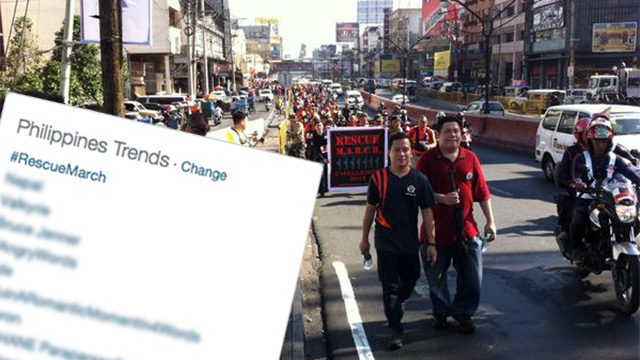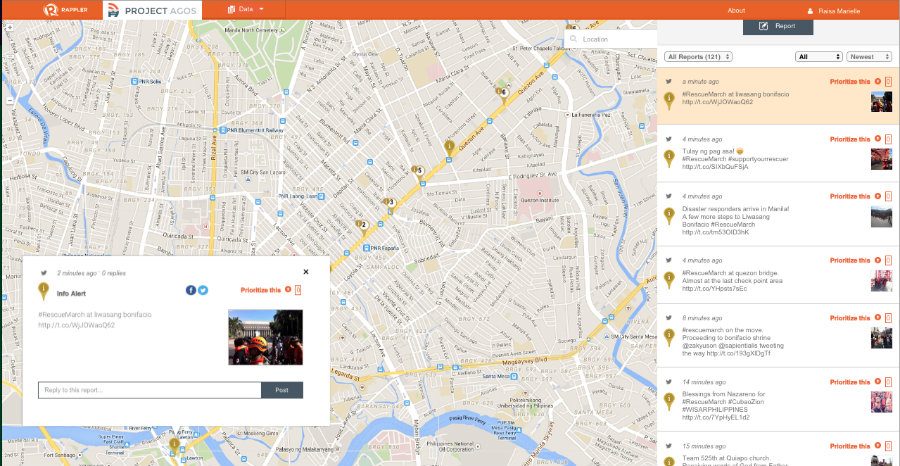SUMMARY
This is AI generated summarization, which may have errors. For context, always refer to the full article.

MANILA, Philippines – At a time when topics on celebrities here and abroad dominate the country’s social media, an unlikely hashtag emerged.
On the early morning of Sunday, April 26, 2015, the hashtag #RescueMarch trended on Twitter for almost four hours.
But what is it all about?
Collective effort
Almost 80 disaster responder teams converged at 4 am at the Quezon city hall for the annual rescue march.
Led by the Manila DRRM team, Orange Helmets, and other rescue teams, the activity aimed at raising awareness on the important work rescuers perform. Coming on the heels of the devastating Nepal earthquake less than 24 hours before, the activity also aimed to promote disaster preparedness.
In order to deliver these goals, disaster responders made sure they were present both offline and online.
Marching more than 10 km from Quezon City Hall to the Liwasang Bonifacio in Manila, teams also took part in the Mogadishu challenge where they had to carry an ‘injured’ member for 1 km. Other disaster responders such as the Philippine Coast Guard also brought their fins and flotation devices to show their water rescue capabilities.
Throughout the march, disaster responders also continuously updated their social media accounts to report the situation on the ground. Their movement was simultaneously reflected on Rappler’s Project Agos map. By the end of the march, almost 150 pins where plotted on the map, putting the hashtag on top of the trending topics on Twitter.
Support disaster rescuers
When it comes to disasters, groups such as the military, police, local disaster risk reduction management office, and civic volunteers form the first and last line of protection.
However, in spite of the dangerous nature of their work, they are among the most neglected and transient offices. In fact, this is a recurring complaint among disaster managers and responders across the disaster-prone country. (READ: Champions for disaster responders: Anyone?)
Through activities like the rescue march, they aim to bring to light the challenges in the life-saving profession. – Rappler.com
Add a comment
How does this make you feel?

There are no comments yet. Add your comment to start the conversation.